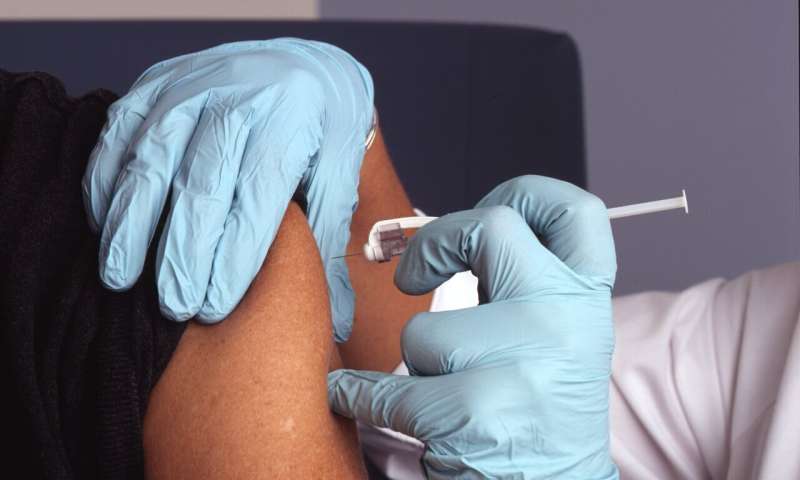Declining Vaccination Rates and Their Role in Accelerating Antibiotic Resistance

Lower vaccination rates are fueling the rise of antibiotic resistance by increasing preventable infections and antibiotic use. Boosting vaccination coverage is key to curbing this global health threat.
Antibiotic resistance has become one of the most pressing health challenges globally, largely driven by the overuse and misuse of antibiotics. However, an often overlooked contributor to this crisis is the decline in vaccination rates worldwide. Lower vaccination coverage not only permits outbreaks of preventable diseases like measles, but also inadvertently fuels the cycle of increased antibiotic use and resistance.
In early 2025, Canada experienced notable measles outbreaks in Ontario and Alberta, with thousands of cases mostly among unvaccinated populations. Although measles is a viral illness, it severely weakens the immune system, making individuals susceptible to secondary bacterial infections such as pneumonia and ear infections. These bacterial complications often necessitate antibiotic treatment, thereby increasing overall antibiotic consumption.
Research indicates that similar patterns have been observed historically. A 2019 study in the U.S. revealed that many children hospitalized with measles developed secondary bacterial infections, which required antibiotics. As vaccination rates drop, the risk of such outbreaks rises, leading to a surge in preventable illnesses and subsequent antibiotic use.
The chain reaction continues as more antibiotic prescriptions promote bacterial resistance. Each antibiotic use kills susceptible bacteria but allows resistant strains to survive and spread. This process accelerates the development of resistant bacteria, rendering some antibiotics ineffective. A 2022 global study in The Lancet estimated that antimicrobial resistance caused over 1.27 million deaths in 2019 and contributed to millions more. This resistance complicates treatment, often requiring more toxic, costly, or last-resort drugs, or leaving some infections untreatable.
Vaccines play a crucial role in tackling bacterial resistance. They prevent infections, thereby reducing the need for antibiotics in the first place. Bacterial vaccines like pneumococcal and Haemophilus influenzae vaccines protect against common bacterial pathogens causing pneumonia and other respiratory diseases. Meanwhile, viral vaccines such as MMR, seasonal flu, and COVID-19 help prevent viral infections that can weaken the immune system and pave the way for bacterial co-infections.
Programs like vaccination campaigns have proven their effectiveness beyond disease prevention. For example, the rotavirus vaccine has been shown to cut antibiotic use by over 20%, according to recent studies. Improving childhood vaccination in developing countries could reduce antibiotic-treated illnesses by more than 20%, significantly curbing the emergence of resistant bacteria.
The outbreaks of measles in Canada serve as a warning to the global community. Missed vaccines lead to outbreaks, more infections, and consequently, more antibiotic use. This cycle not only harms individuals but also jeopardizes the efficacy of antibiotics for future generations. Vaccination is a vital public health strategy—not just to prevent disease but also to preserve the effectiveness of antibiotics. To fight antibiotic resistance effectively, boosting vaccination rates worldwide is essential, especially for vulnerable populations like the elderly, cancer patients, and transplant recipients, who depend heavily on antibiotics.
In conclusion, declining vaccination rates are a silent driver behind the acceleration of antibiotic resistance. Reinforcing vaccine uptake is crucial, not just for individual health but for safeguarding the global effectiveness of antibiotics and ensuring resilient health systems for the future.
Stay Updated with Mia's Feed
Get the latest health & wellness insights delivered straight to your inbox.
Related Articles
Population Aging Identified as Main Driver of Musculoskeletal Disorders
New research reveals that population aging is the leading factor driving the global rise in musculoskeletal disorders, with significant health and economic implications worldwide.
Revolutionary Drug Formulation Transforms Intravenous Treatments into Rapid Injections
A new drug formulation platform developed by Stanford researchers enables high-concentration protein therapeutics to be injected quickly and easily, potentially transforming outpatient treatments and self-administration of biologic drugs.
Rising Use of Wegovy Among U.S. Adolescents for Weight Management
The use of Wegovy for weight loss in U.S. teenagers is on the rise, with prescriptions increasing and growing recognition of its potential for managing adolescent obesity, despite ongoing safety evaluations and access limitations.



